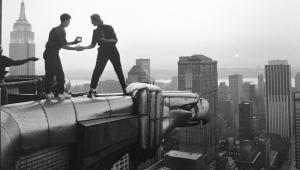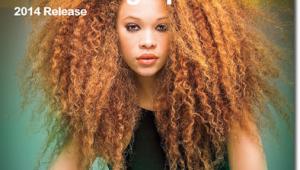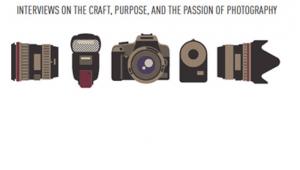Curious Critters: Creating A Childen's Picture Book

In June 2009, Sigma Pro director Dave Metz contacted me, requesting some wildlife images for full-page Sigma advertisements. He knew that I had been working on my first book, Animals of Ohio’s Ponds and Vernal Pools (Kent State University Press, July 2011), so he figured I could send him images fairly easily. He then made an interesting—and at the time slightly disconcerting—request: would I please photograph the animals not within their natural settings but against white backgrounds?
Blue Jay

© David FitzSimmons
At the time, I had been working with a Lastolite Cubelite light tent for another project. Metz suggested, “Why don’t you put some critters in your tent and see what you get?” Hmmm. Interesting idea, but I wasn’t so sure about his plan. Most wildlife photographers work hard to depict their subjects in situ, showing rocks, plants, water, and other elements of their habitats, creating images rich with natural history content.
Metz, however, had another goal. He explained that, amid all the advertising copy, images of lenses, and even a headshot of me, the animal subject in its habitat would get lost. No one would even see the animal. In this case, simple was better.
Red Flat Bark Beetle

© David FitzSimmons
I called up my naturalist friend, Steve McKee, at Gorman Nature Center, Mansfield, Ohio, and planned a shoot. A few days later I photographed my first Curious Critters, a number of educational and rehabilitation animals that included frogs, toads, turtles, a baby squirrel, even a poisonous snake. I photographed anything that would fit in the tent. Notice, I didn’t say stay in the tent, just fit in the tent. Not all animals wanted to stay inside my portable studio!
Right after taking the very first pictures—of a green frog—it was clear that we were onto something amazing. Animal shapes, colors, patterns, and textures jumped out at you. Frogs looked greener. Animal markings were bold and intriguing. And the eyes—it became so easy to connect with the animals through their starkly apparent eyes.
Virginia Opossum

© David FitzSimmons
Within months thereafter a cute, meditative-looking gray treefrog appeared in a full-page ad, and a month later the bright orange shell and beaming red eyes of a male Eastern box turtle appeared in another. The ads were a hit.
You couldn’t stop me now. Everywhere I went, I was looking for new subjects. My family and I found reptiles, amphibians, insects…you name it. Each new subject in hand, I would disappear into our basement studio for another portrait session.
One particular summer night, my daughter Sarah, 5, thrilled with the project, yelled over to me while I was mowing. “Daddy! Come here and see this insect.” I must admit that I was hot and tired, but I pushed myself: “Be a good daddy. Turn off the mower and see what she found.” I walked across the yard to see her find: a spectacular 2” long broad-necked root borer beetle, one of the most extraordinary insects I’d ever seen. I hugged my daughter and exclaimed, “Sarah, I love you!” The mowing could wait: I had another amazing critter to shoot.
Eastern Screech-Owl

© David FitzSimmons
I traveled everywhere with my light tent, strobes, and macro lenses. On a three-day float down the Tuscarawas River in northeastern Ohio, my brother Jim and I kept an insect net bungeed to the hull. After we caught a particularly colorful dragonfly, we pulled over on a sandbar, where I opened the light tent and photographed the insect right along the river. All over North America you could find me popping open my light tent at nature centers, rehabilitation facilities, and zoos.
At about this point, I realized that my collection of images needed a name. Always attracted to alliteration, I called the collection Curious Critters.
The series grew in number and diversity. I began shooting raptors and arachnids. I adjusted my aquarium photography techniques and began creating portraits of fish. Working with Lastolite, I designed a large animal rig, in which I can shoot anything up to, say, the size of a pony.

© Michael FitzSimmons
All throughout the process I stuck to some basic principles:
• Care for the animals. I do not sedate animals. I return wild animals to their native habitats. And I work with educational and rehabilitation centers, where I can partner in their important work.
• The eyes have it. Most of my Curious Critters shots are taken at eye-level. This allows viewers to feel emotionally connected to the animals.
• Education and conservation. I try to promote an appreciation of animals and nature. Exciting, intriguing images of nature can help people connect to nature and then, hopefully, help conserve it.
All of the images in the Curious Critters series have been photographed using Sigma lenses, as well as some Sigma cameras and accessories, so Sigma was quite interested in helping me bring my images to a variety of audiences. I began presenting my Curious Critters project right away, and in September 2010, with Sigma’s sponsorship, I opened a 24-image exhibit at the Telluride Photo Festival. Sitting in Telluride’s Sheridan Opera House gallery, where I listened to the electric response of the exhibit’s visitors, compelled me to produce a children’s picture book. People repeatedly pointed out how the bold and intriguing images would appeal to kids. Sigma agreed to support the project.

© David FitzSimmons
In the fall of 2010 I began work on Curious Critters. While I have shots of animals from around the world, I focused on common, North American animals. I set a goal of making the book both educational and fun. I began by researching national science education standards so that the book would be useful to schools, teachers, and librarians, not to mention parents.
The book changed shape as it developed. An early draft looked more like a reference book, with natural history information alongside each animal; one fall Saturday afternoon, however, my brother Tom offered needed advice: “Dave, the book is nice. The photographs are fun and engaging, but the prose is too clinical. Why don’t you try this? Each animal appears to have its own personality. Why not write the book as if the animals were talking to you? Make their personalities apparent.” He wanted a grumpy toad, a frenetic flying squirrel, a pleasant opossum, and so on.
Within weeks I had rewritten the book, depicting these and other personalities. Now each animal had a unique voice to match its appearance. I should point out that I do realize that we don’t know if animals have personalities, but we also don’t know that they don’t. So, I decided to characterize each Curious Critter with its own mood, opinions, diction, syntax, and other traits.
I guess you could say that my Curious Critters series offers a different take on the portraiture of Richard Avedon. While he focused on human subjects, trying to capture human subjects without distractions, I aim for undistracted likenesses of animals. When writing, I pretend that I am listening to the animals talk to me as they pose: a jabbering jay, a poetic opossum, a singing salamander, a bothered bark beetle. Curious Critters also includes two additional pages of natural history information, a two-page spread of life-size silhouettes that becomes a guess-the-animal game, and a glossary.
Curious Critters is available through all major book retailers. List price: $19.95. For more Curious Critters photos, games, educational resources, or to purchase signed copies of the book, visit www.curious-critters.com.
David FitzSimmons is a photographer, writer, and university professor. One of four Sigma Pros in North America, his landscape images appear in calendars and numerous magazines. He presents school and public programs and leads photography and writing workshops across North America.
You can see more of his work at: www.fitzsimmonsphotography.com.
- Log in or register to post comments

















































